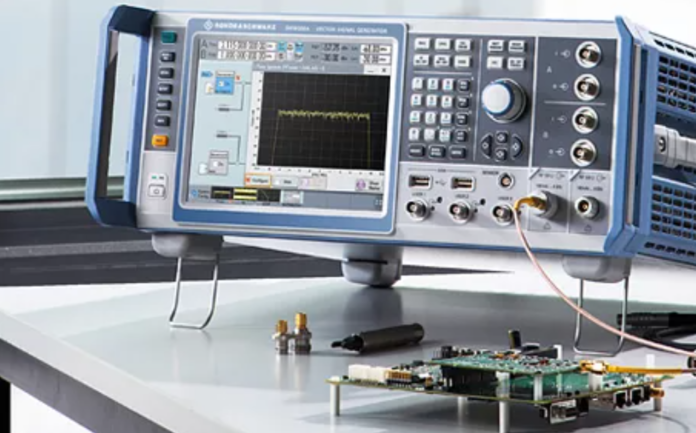Following on from the oscilloscope in our series of “what is?” articles comes the signal generator.
A signal generator is piece of test equipment that produces an electrical signal in the form of a wave.
There are different types of signal generator – arbitrary waveform generators, function generators, analogue, vector…my brain’s beginning to hurt already. Let’s start with a simple one first, the function generator.
The function generator produces a simple repetitive waveform, usually a sinewave, but it can also produce sawtooth, step, square and triangular waveforms.
The next level of sophistication is the arbitrary waveform generator. Unlike the function generator, which has a fixed set of functions on the box, you can create your own waveform in software then upload it to an arbitrary waveform generator.
Getting more complicated now, we move on to RF and microwave signal generators. These produce waveforms in the radio frequency which is roughly from about 3 kHz to 300 GHz, with microwave covering the higher end of the range from 300 MHz upwards.
Here at MCS we’d class our RF signal generators, like the Vaunix LSG-402 in the range from 0-6 GHZ. For microwave, most of our models fall into the range 10-20 GHz like the Hittite HMC-T2220. We also have some, such as the HMC-T2270 from Hittite, which go up to 70GHz.
If that isn’t confusing enough for you, these signal generators can either be analogue or vector (digital). This refers to the type of modulation that can be used. If you imagine that the wave is an empty bus travelling along, then modulation is what allows the passengers to be carried on the bus.
Waves can be modulated to carry different sorts of information eg voice, data. So, an analogue signal generator will offer different types of analogue modulation such as FM, AM and phase modulation whereas a vector signal generator deals with digital modulation formats like QAM, QPSK, FSK, BPSK, and OFDM.
So what are they used for?
RF and microwave signal generators are used for testing in a variety of applications such as mobile phone communication and Wifi. For example a leading OEM (original equipment manufacturer) could use a Rohde & Schwarz SMBV100A, which covers the frequency range 9 kHz to 2 GHz/6 GHz, to generate complex wireless standards such 802.11 (wifi ), GSM (2G) CDMA2000 / 1 x EV-DO (3G) and LTE (4G).






